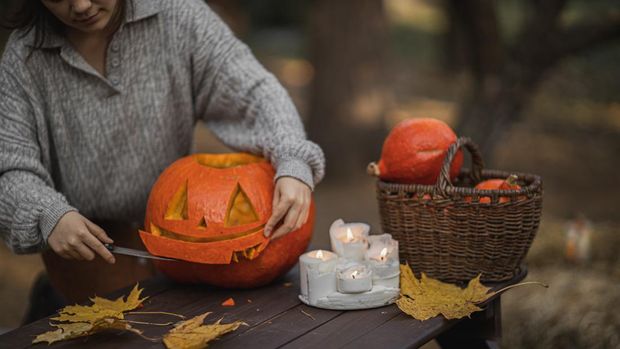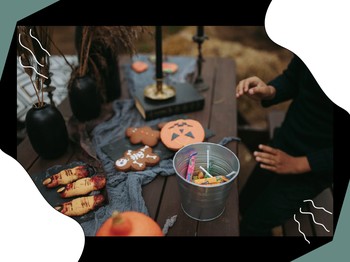What is Halloween without the presence of a glowing jack-o'-lantern sitting by the window or on a porch? For decades, we all know the carved out pumpkin has been a symbol of Halloween's spookiness as people made time to do pumpkin shopping several nights before Halloween came. Indeed, carving pumpkins has become a beloved fall tradition in America-but do you know the reason why? What's exactly the history behind pumpkin in Halloween, mostly about the well-known jack-o'-lantern?
In a jack-o'-lantern, the top of the pumpkin is cut off to form a lid. The flesh inside is scooped all the way out and a scary or funny face is carved out of the rind to expose the hollow interior. For the glowing part, a candle or tealight is placed within the pumpkin before the lid is closed. The lanterns were believed to represent supernatural beings or were used to ward off evil spirits. In other words, they served either to frighten people or keep harmful spirits out of one's home.
However, before pumpkin, turnips and potatoes served as early canvasses back in Ireland. In fact, jack-o'-lantern comes from an Irish folktale about a mischievous man named Stingy Jack. According to the story, Stingy Jack had tricked the devil twice. The first time, Stingy Jack invited the devil to have a drink with him. As he didn't want to pay for his drink, he convinced the devil to turn himself into a coin that Jack could use to pay for their drinks. But after the devil fulfilled his wish, Jack decided to keep the coin and put it into his pocket next to a silver cross, which prevented the devil from changing back into his original form. Eventually, he freed the devil under two conditions; that the devil would not bother Jack for one year and if Jack died, the devil would not claim his soul.
 Pumpkin Carving/ Foto: Pexels: Monstera Pumpkin Carving/ Foto: Pexels: Monstera |
One year has passed, Jack encountered the devil and tricked him into climbing to a tree to pick a piece of fruit. But when he was up in the tree, Jack carved a sign of the cross into the tree's bark so that the devil couldn't come down until the devil promised Jack not to bother him for ten more years. However, just like every living thing, Jack eventually passed away. But his life was too sinful for him to go to heaven, and he was also barred from entering hell due to the deal he made with the devil of not taking his soul away. In the end, the devil gave him an ember of coal which Jack put inside a carved-out turnip that was made to light his way as he wandered the earth for eternity.
Thus, Irish people started to carve demonic faces out of turnips to frighten away Jack's wandering soul. When Irish immigrants arrived in the United States in the 19th and early 20th centuries, they found out that pumpkins, which were native to the region, were more suitable for carving jack-o'-lanterns. As more Americans began to celebrate this spooky season, jack-o'-lantern eventually emerged as its most iconic image.
(HAI/alm)


